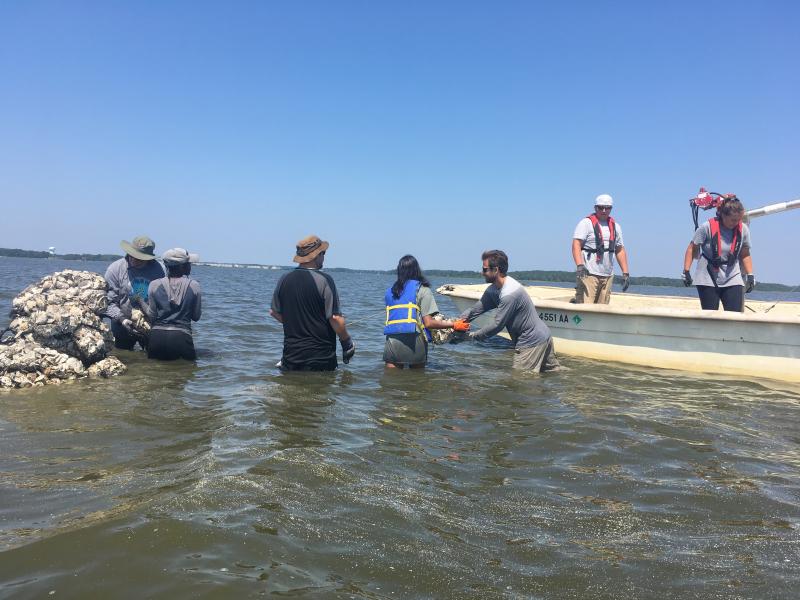The first known artificial oyster reef in Little Assawoman Bay was installed by the Delaware Center for the Inland Bays during the week of July 29.
The reef is part of work to restore once-abundant populations of oysters native to the Inland Bays. Oysters filter water to provide tremendous water-quality benefits, and create habitat for fish and wildlife. This project will help researchers understand the growth and survival of oyster populations in the Inland Bays so any future artificial reefs can be placed in the best possible locations.
The reef was constructed using spent oyster shells from local restaurants that participate in the CIB’s Don’t Chuck Your Shucks shell recycling program. Spent shells are collected by center staff, left to cure for a few months, then bagged by volunteers in late winter and early spring. The shells were transported by CIB staff to Little Assawoman Bay where interns and volunteers built them into the 10-by-40-foot reef. The reef was “seeded” with oysters raised by volunteer oyster gardeners. Although these shells originated in restaurants, the oysters that will grow on these reefs are not permitted to be harvested or consumed; they are strictly for restoration and research purposes.
“Each of these research reefs will provide water-quality and habitat benefits, but will also help us better design and locate future reefs, aiding in the recovery of wild oysters in the Inland Bays,” said Andrew McGowan, Center for the Inland Bays environmental scientist.
Unfortunately, due to disease and water quality issues, the Inland Bays have very low wild oyster populations. The reef in Little Assawoman Bay, along with two additional reefs being built in Rehoboth Bay, will allow the center and other project partners to determine which areas are best suited for oyster growth, survival and reproduction. With this information, the center can optimize the placement of future reefs and help increase wild oyster populations leading to cleaner water and increased habitat for other aquatic creatures.
While these reefs are a critical first step, they are only a start to a long-term effort needed to bring back the wild oyster population to the Inland Bays. To help, citizens can donate to the Center for the Inland Bays, eat oysters at participating Don’t Chuck Your Shucks restaurants, or become oyster gardeners.
For more information, go to www.inlandbays.org.
















































